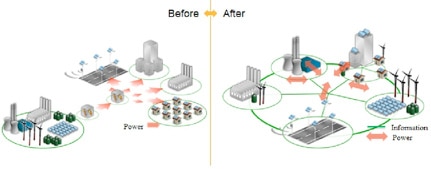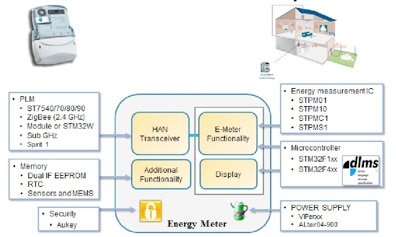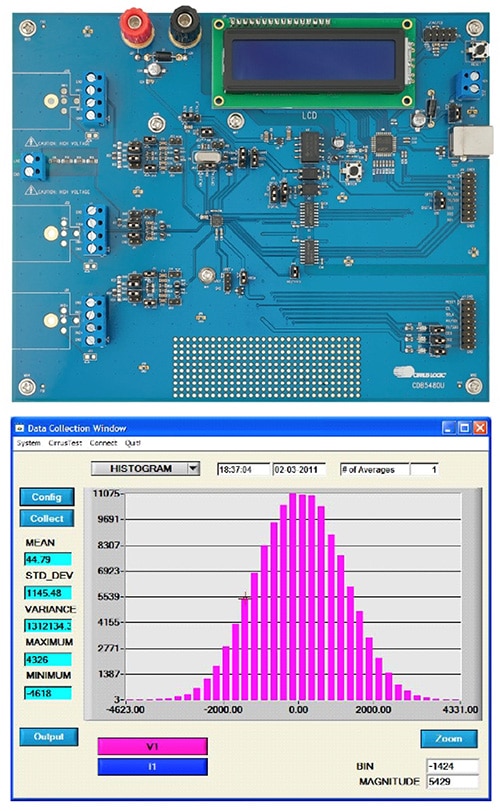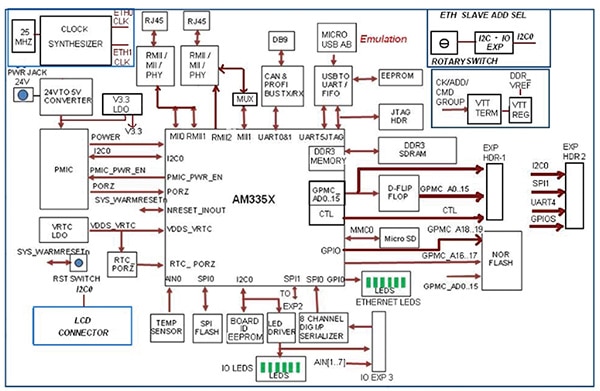Evaluation Kits and Reference Designs Help Accelerate Development of Smart Grid Solutions
投稿人:电子产品
2016-05-20
The Internet of Things (IoT) promises to deliver a significant amount of savings when fully applied in Smart Building and Smart Campus environments. Managing energy will provide one of the largest savings as environmental controls are managed to provide optimal comfort for inhabitants while minimizing energy use. Factory and industrial complexes will also benefit from a more robust and connected IoT-based energy-management system. Collecting and controlling all the points of power delivery and consumption will require a much wider roll-out of energy measurement and management devices.
MCU manufacturers have long targeted energy measurement and management applications and modern MCUs have several advanced features that make them very efficient in these applications. Furthermore, reference designs are often available that provide complete system solutions for common energy measurement, control, and concentrator applications. This article will explore some of these reference designs to illustrate how they can significantly simplify the implementation of your next energy measurement and management design and accelerate your time to market.
Energy management in the Smart Grid
The Smart Grid is a new way of thinking and architecting the energy infrastructure. It applies to all aspects of the generation, distribution, and utilization of energy. If all three of these elements are in place and operational, a more intelligent and efficient "Smart Grid" can be constructed. A Smart Grid will optimize energy generation, delivery, and consumption by measuring and predicting the energy needed, and then generating and delivering it efficiently. A key element of the Smart Grid is the sensing, monitoring, and communicating of energy use by the consumer. Once energy use is known and ideally predictable by using big-data analytics, generation and delivery can be better managed. If consumption can be managed based on the availability of generated energy, additional efficiencies can be obtained.
Figure 1 illustrates the evolution of the Smart Grid. On the left side, the previous energy system was concentrated on power generation. The Smart Grid utilizes a more distributed approach to power generation, using multiple sources and a communications and sensing network to better manage energy delivery and utilization. Sensors are used throughout the Smart Grid to measure power. This is not only implemented at each use point, but also at each generation and distribution point so real-time decisions can be made that optimize the efficiency of the entire system.

Figure 1: Smart Grid Evolution (Courtesy of STMicroelectronics)
Energy metering evaluation kits
Energy metering within the smart home can be a key element within the Smart Grid. Often an energy-metering solution will include an MCU working in conjunction with an Energy Measurement IC. Figure 2 illustrates a simplified block diagram of a typical Smart Meter utilizing an STMicroelectronics STM32F Family MCU, STPM10 Energy Metering IC and several supporting components to provide Power Line Modem (PLM) communications, additional memory, security, and power. The STPM10 measures the active, reactive, and apparent energy in a power-line system using current transformer and shunt sensors in either a single-phase or poly-phase metering system.

Figure 2: Energy Metering within the Smart Home. (Courtesy of STMicroelectronics)
The analog section of the STPM10 includes a preamplifier and first-order sigma-delta A/D converter, band-gap voltage reference, and a low-drop voltage regulator. The digital section includes a system control, oscillator, configuration, and calibration Non-Volatile memory, a DSP, and an SPI interface. From a pair of sigma-delta output signals produced by the analog section, the DSP unit computes the amount of active, reactive, and apparent energy consumed, as well as the RMS and instantaneous voltage and current values. The results of the computation are available as pulse frequencies and states on the digital outputs of the device, or as data bits in a data stream, which can be read from the device by means of the SPI interface. An STEVAL-IPE15V1 evaluation kit is available to simplify prototype development.
Energy metering and communications reference designs
Evaluation kits like the one above help speed your development cycle by quickly putting working hardware at your fingertips. The development process can be further accelerated when software tools are provided that include a graphics user interface (GUI) to observe the operation of the target evaluation kit or reference design. As an example, the Cirrus Logic CDB5480U-Z reference design platform includes a target board and an associated GUI that communicates with the board to configure and to observe operation. Figure 3 shows the target board on the left and an example output from the GUI that shows the histogram for the collected data. The mean, Standard Deviation, Variance, Maximum, and Minimum values are displayed along the left side of the window. This combination of a full-featured target board and an advanced configuration and measurement tool with an easy-to-use GUI can be particularly effective at speeding your development cycle.

Figure 3: Reference Design Board and User Interface Display (Courtesy of Cirrus Logic)
MCU manufacturers also provide reference designs for the communications portions of the Smart Grid. Power-Line Communications is a popular method for sending and receiving data within the Smart Grid and MCUs are often used as the central control element in these types of systems. Some MCUs have been optimized for these applications and provide an extensive set of communications functions for Smart Grid implementations. Figure 4 shows a block diagram for the Texas Instruments TMDSICE3359 Industrial Communications Engine reference design and the use of the communications optimized TI AM335x processor. Notice the extensive set of communications interfaces supported including dual Ethernet, USB, CAN/PROFIBUS, I2C, SPI, and UART.

Figure 4: Block Diagram of Texas Instruments Smart Grid Communications Reference Design (Courtesy of Texas Instruments)
TI's AM3352 MCU is powerful enough to implement a wide range of intelligent algorithms for sensing and controlling energy use for lighting, HVAC, signage, occupancy, material transport, and process control. Included with the TI TMDSICE3359 reference design is an extensive collection of code collected in the SYS/BIOS Industrial SDK. The SDK includes an open-source RTOS, boot loader, peripheral drivers, an evaluation version of Industrial Communication protocol stacks for an EtherCAT slave stack, PROFIBUS slave stack, EtherNet/IP adapter/slave stack, Profinet IO Device stack, as well as sample applications demonstrating industrial input/output data exchange over various industrial communication protocols. The inclusion of these key functions dramatically speeds time to market by eliminating the need to create these complex functions from scratch.
In summary, making the Smart Grid "smart" requires control and metering capabilities at each of the key elements of the energy grid: generation, distribution, and consumption. By using MCU-based power measurement systems the grid can collect the vast amounts of data needed to improve system efficiency, while MCU-based communications systems enable the sending and receiving of this data within the Smart Grid. As we have shown, evaluation kits and reference designs are readily available to help you accelerate development of these Smart Grid design solutions.
For more information about the parts, kits, and reference designs discussed in this article, use the links provided to access product pages on the DigiKey website.
免责声明:各个作者和/或论坛参与者在本网站发表的观点、看法和意见不代表 DigiKey 的观点、看法和意见,也不代表 DigiKey 官方政策。









 中国
中国